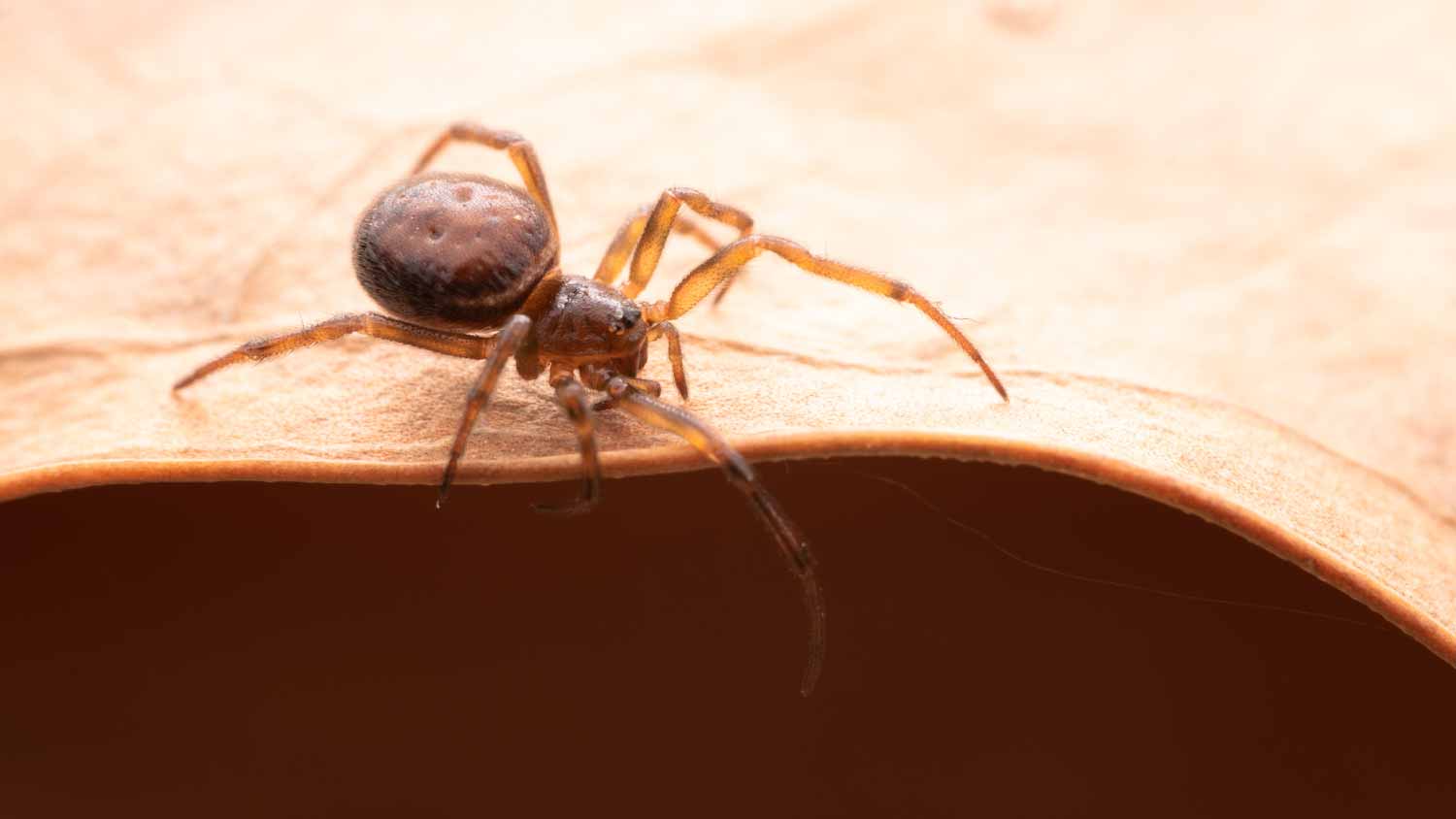
Whether you have bugs, bats, or rodents invading your home, you’ll want to contact an exterminator quickly. Find out how much pest control costs in Columbus, OH.
Being able to identify these venomous spiders is a good idea


Both of these spiders are venomous but only bite when startled.
In rare cases, black widow and brown recluse bites can be dangerous to humans, so seek medical attention immediately if you begin to have a severe reaction.
Most people experience lesser symptoms, but brown recluse spider bites can cause skin damage.
If you have either of these species in your home, call pest control to eliminate them.
Some people have an overwhelming fear of all spiders, even those with no capability to do harm. However, some spiders deserve a touch of trepidation, like the brown recluse and black widow. Venomous spiders are uncommon in North America, but you may see these two types at some point, depending on where you live. Ideally, if you spot a brown recluse or a black widow, you’ll recognize it and call an exterminator immediately rather than risk a bite. Here, we’ll break down the key features of black widow vs. brown recluse spiders, so you can safely identify them and eliminate them from your home.
When you see a spider that you think might be a black widow or a brown recluse, you don’t want to get up close and personal to try to identify them. Fortunately, you can spot some key characteristics from a safe distance.
| Characteristic | Black Widow | Brown Recluse |
|---|---|---|
| Color | Shiny black | Light brown |
| Markings | Red hourglass | Dark brown violin |
| Venomous | Yes, but not fatal | Yes, but not fatal |
| Body Size | About ¼ to ½ inches | About ¼ to ⅜ inches |
| Body Size With Legs | Up to 1-½ inches | Up to 1 inch |
| Body Shape | Round | Oval |
| Web Shape | Irregular | Irregular |
| Leg Markings | Bristly back legs | Darker than body |
| Leg Shape | Segmented, tapered | Segmented, tapered |
| Location | Widespread across the U.S. | South Central and Midwestern states |
Black widows and brown recluses are very different-looking spiders, so it’s easy to tell them apart if you spot one. Black widows don’t look much like other common spiders and are easily identifiable, but brown recluses have many lookalikes.
Female black widows are larger than the males, which are about half the size. A female black widow’s body length is up to ½ of an inch with a leg stretch up to 1-½ inches, which is similar in diameter to a silver dollar coin.
Brown recluse spiders are smaller, usually up to ⅜ of an inch in body length. They have a leg stretch usually up to 1 inch in diameter, similar to the size of a quarter.
Black widow spiders have round bodies like an orb. Brown recluses have oval-shaped bodies.
Female black widow spiders have a distinctive color when they reach adulthood. They typically have shiny black bodies with a red hourglass shape on the abdomen.
However, some male black widows are a brownish-black color. They rarely have the hourglass marking, although they may have red or white striping. When they are young, black widows may start with a white or orange body before transitioning to black.
Brown recluse spiders have a light brown or yellowish-brown body. They have a dark brown violin shape on the back, which can distinguish them from other small, brown spiders in your home. Their legs are a darker brown than their bodies.

These two North American spiders carry dangerous venom for humans, but it’s important to know how vigilant you must be should you receive a bite.
Both black widows and brown recluse spiders prefer to hide from humans. They are not aggressive spiders. However, they will bite if you startle them or if they feel threatened.
Black widow and brown recluse spiders carry a highly toxic venom. However, because they are so small, they generally cannot deliver enough venom to put a human in danger of a fatality.
A black widow bite can cause significant pain and muscle cramps for most people. Sometimes, a bite victim needs hospitalization. However, fatality from a black widow bite is extremely rare, even for children, at less than a 1% mortality rate.
Brown recluse bites can cause skin damage that requires medical care for some victims. You’ll experience significant aches and pains, but it is very rare to have a life-threatening systemic reaction to their bite.
Black widow and brown recluse spider bites can create significant illness for dogs and cats, potentially leading to death. You should seek veterinary care immediately after a bite. Pets with a smaller body weight are in greater danger from the venom of these spiders than larger pets.

Here are a few things to note about these spiders’ day-to-day.
Black widows and brown recluses both try to avoid high-traffic areas when building a web.
Black widow webs are usually large and irregular in shape, often built near the ground. Inside a home, they may build a web in a crawl space or basement.
Brown recluse spiders tend to build webs near the ground, and they also have an irregular shape. Indoors, they tend to build webs in crawl spaces, basements, and attics.
Male black widow spiders may only live a few months, but a female can live up to three years. Black widow spiders use their webs to protect their egg sacs, where they may lay up to 1,000 eggs at a time.
Brown recluse spiders tend to live up to two years. When laying eggs, they create multiple egg sacs. They may lay up to 300 total eggs at a time.
So, what attracts spiders like the black widow or brown recluse? They tend to move indoors in search of insects to eat or when the weather outdoors is becoming colder.
Black widows eat insects like flies, grasshoppers, cockroaches, ants, and beetles. Brown recluse spiders have a similar diet, primarily consisting of crickets, moths, flies, and cockroaches.
If your home has roaches, seek help from a local pest control company to eliminate these insects, which will help prevent these venomous spiders from moving in for a food source.
If you see many of these spiders—or their egg sacs—seek help from an exterminator. The cost of a pest control visit is about $175, but it depends on the type of pest and the level of infestation. Spider extermination costs for venomous species like black widows and brown recluses may be higher because of the chance of a dangerous bite, up to $300 or more.
Because they live in similar areas of the home, pest control experts will probably use a similar method of trying to eliminate black widows or brown recluses. Some pest control companies will waive the inspection fee if you proceed with their extermination, but ask about their removal methods if you’re concerned about chemicals around your pets or children.
To keep spiders out of the house, get rid of all the other insects making themselves at home. Plug holes in weather stripping or areas where a conduit or a water pipe enters the home. You can place natural spider repellent around the home, like cinnamon, peppermint oil, and lavender.
From average costs to expert advice, get all the answers you need to get your job done.

Whether you have bugs, bats, or rodents invading your home, you’ll want to contact an exterminator quickly. Find out how much pest control costs in Columbus, OH.

Your mosquito misting system cost will vary based on factors such as the size, type, brand, and more. Find out what the budget for this system looks like.

If you discover a wasp nest near your home, you’ll want to remove it ASAP. Learn wasp nest removal cost factors in this guide.

Wondering how to kill stink bugs—and keep them away, for good? Read on for a DIY guide on how to get rid of stink bugs.

Many popular cockroach treatments are harmful or annoying for pets. We’ve collected the alternatives that get rid of roaches without the same dangers.

Whether it’s a swarm of mosquitos interrupting your summer evening on the patio or the discovery of fleas in the guest room, you may have to break out bug spray. Read on for tips to reduce your exposure and signs of bug spray side effects.